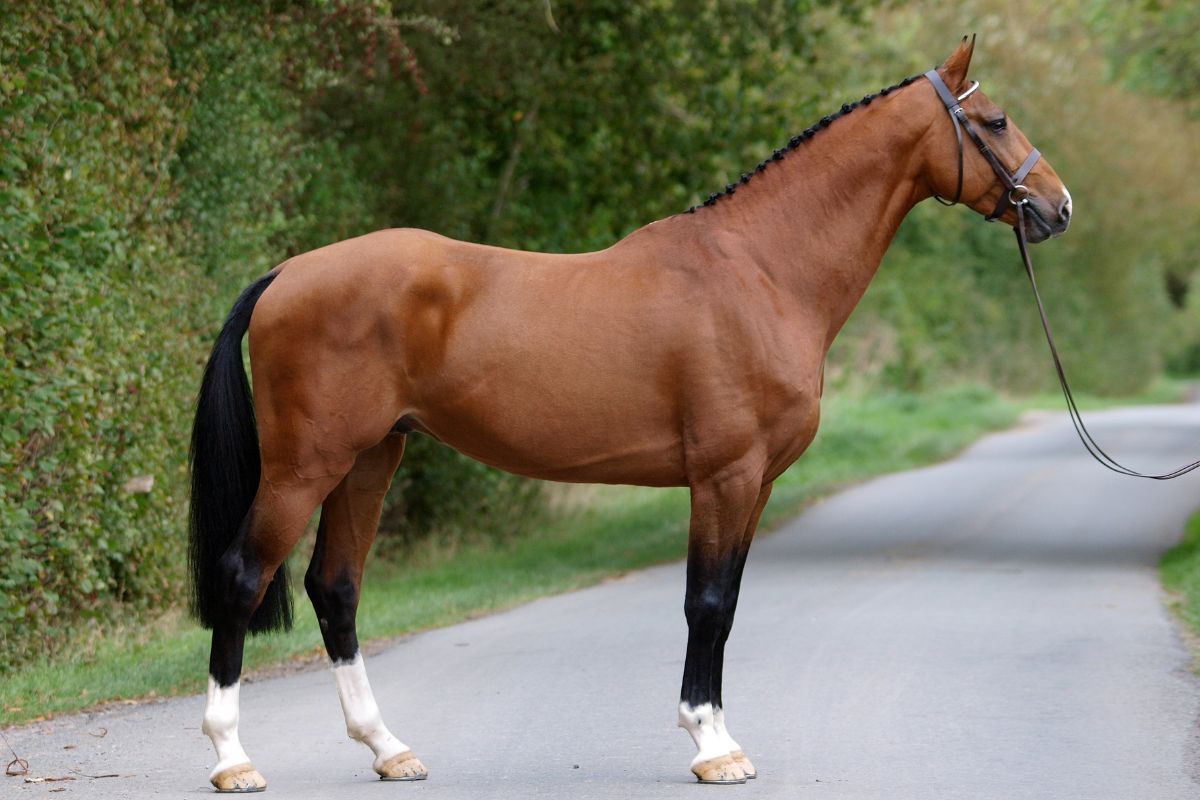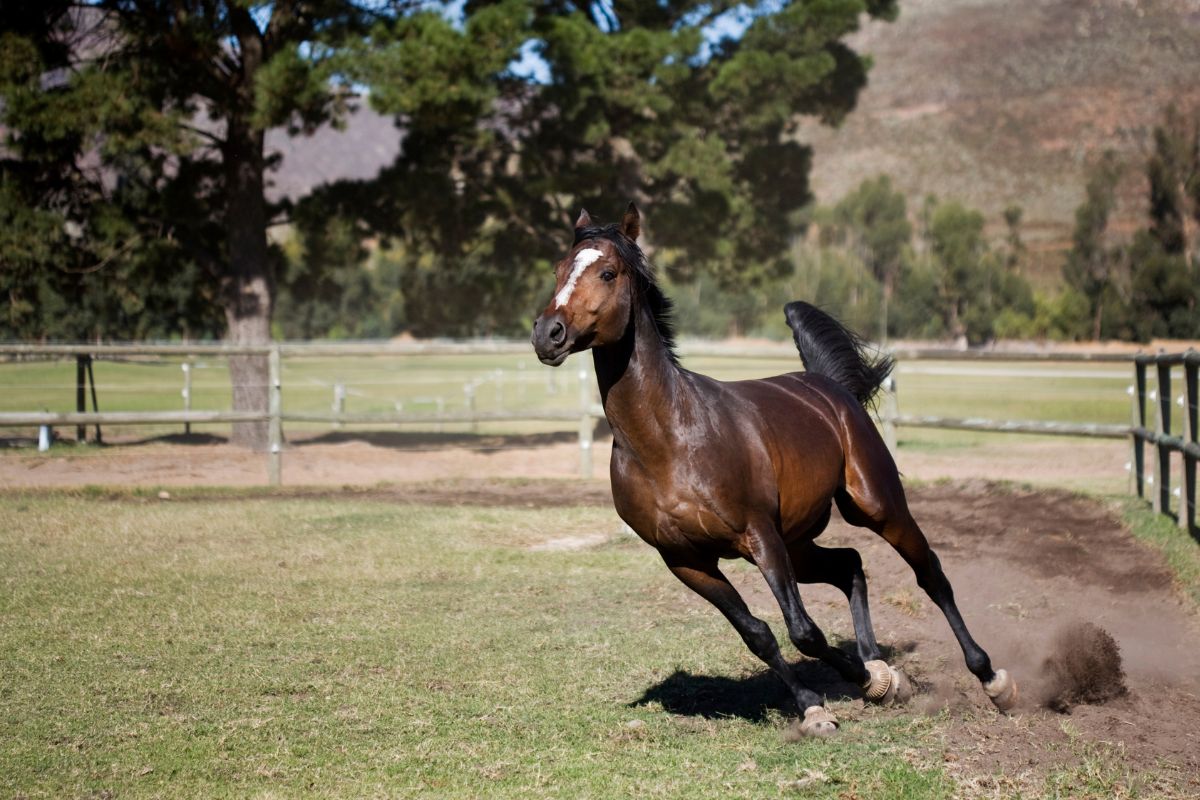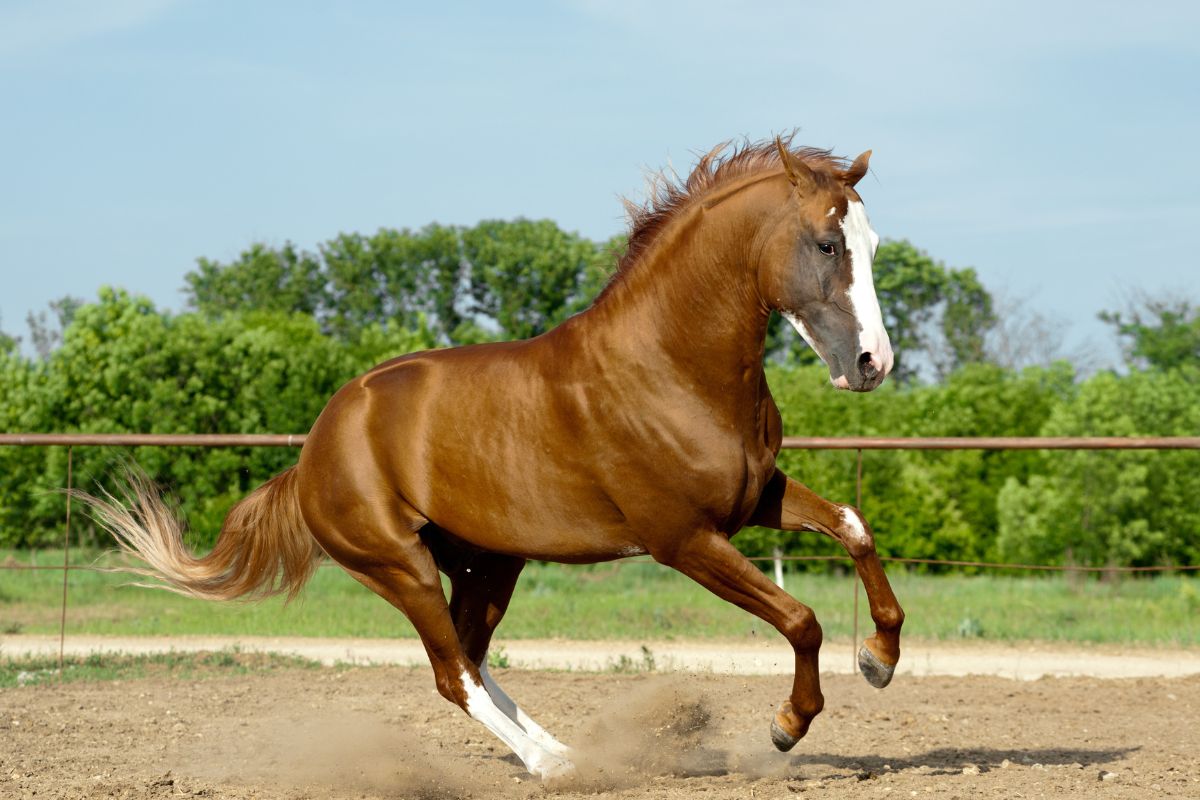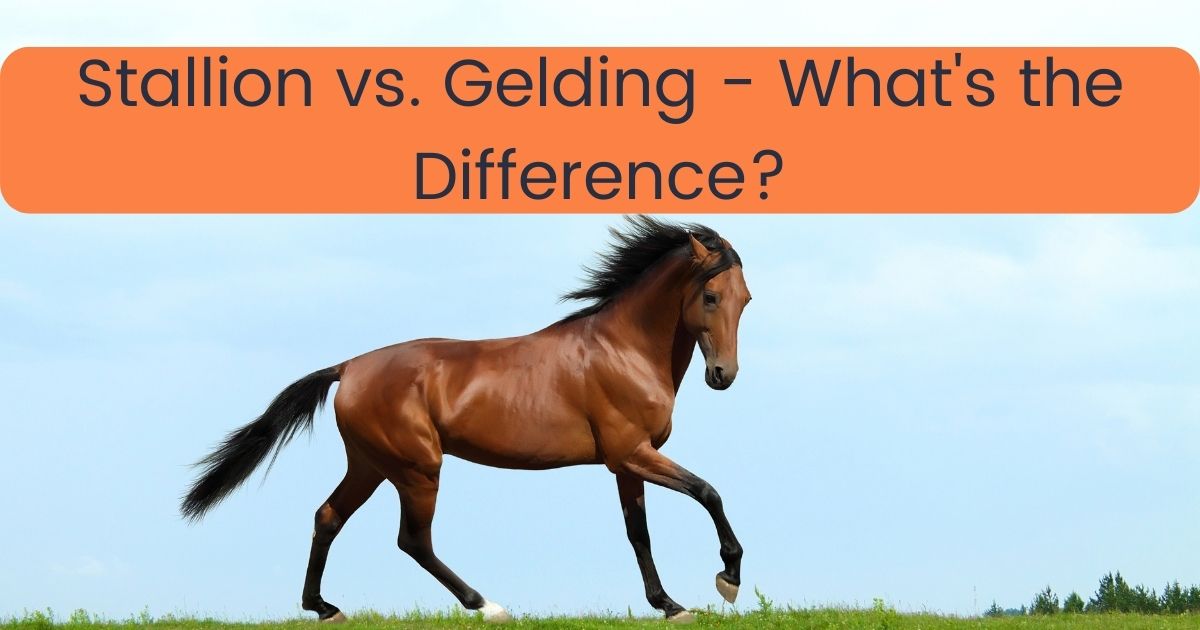What is a Stallion?
A stallion vs. gelding is an issue of consideration for a first-time horse owner or just interested in this equine.
So what is a stallion? A stallion is a male horse that is kept for breeding and not neutered. The core reason for breeding a stallion is reproduction. Most stallions that are racehorses are retired early so that they can reproduce to keep the bloodline.

What is a Gelding?
So if a stallion is a male horse, what is a gelding? A gelding is also a male horse, with its testicles removed so that it does not reproduce by neutering, also known as spaying or castration. Neutering a male horse is usually within three months to one year of when it is born when there is no intention for the horse to reproduce.
Neutering a horse will lower its testosterone, making it easy to handle, train and ride. A horse neuter is a trained veterinarian, as this is a medical procedure that could harm the horse if not done correctly.
Stallion vs. Gelding – What’s the Difference?
Both are male horses, so what’s the difference between a stallion and a gelding? The main difference between a stallion and a gelding is that; a stallion has not gone through neutering and, therefore, will reproduce, and a gelding is neutered and will not reproduce.
A castrated male horse is serene due to its lowered testosterone levels, while an uncastrated male horse is aggressive.
Since geldings are not for breeding but are workhorses, geldings are much heavier, weighing between 900 to 2,000 pounds (408 to 907 kg). Stallions usually weigh 870 to 900 pounds (395 – 408 kg).
Stallions are pricier as they are hard to find, while geldings are less expensive.
The Behavioral Traits of Each Horse
Although both are grown male horses, they have different behavioral traits due to neutering geldings and not neutering stallions.
Geldings will easily obey and are more sensitive, while stallions are jealous, particularly around other stallions, and have violent tendencies due to high testosterone.
Stallions have an unpredictable characteristic as they are much harder to train, while geldings have a much calmer disposition and are less moody, making them great riding partners.
When it comes to temperament gelding vs. stallions, geldings are less temperamental.
Is a Stallion Stronger Than a Gelding?
The debate that a stallion is stronger than a gelding is nothing but a myth. Stallions and geldings are full-grown male horses much stronger than mares and foals.
However, geldings are much heavier than stallions and even though stallions have higher testosterone.
Stallions and geldings can perform the same tasks; however, handling stallions requires great care as they can be unstable and cause harm to people and other horses.

Which Horse is Faster?
There is a misconception that stallions, due to their hot-blood aggressive nature, are faster than geldings; this is further from the truth. Horses are part of Equus, a genus of naturally predatory mammals such as zebras and donkeys.
Both stallions and geldings run fast, at speeds 30 to 55mph (48 to 85kph). These running speeds depend on many factors, such as age, health, training, and general conditions of the terrain.
Stallions are hard to train, which may affect how fast they run, but ultimately geldings and stallions run at the same speeds.
Which Equine is Better Suited to Beginners
There are three types of horses, stallions, geldings, and mares. A mare is a female horse over three years that can give birth to a foal. Females of other equine species, such as zebras, mules, and donkeys, are also called mares.
Choosing an equine better suited to beginners can be confusing; most people will lean toward a mare or a gelding as they are perceived to have a calmer temperament than stallions.
Let’s explore each one to determine which one suits a beginner.
Mare
Mares are less temperamental and aggressive compared to stallions, as they are female horses and have low levels of testosterone. However, during the breeding season, usually around spring, mares are hormonal and can be moody.
Hormones make the mares more aggressive than usual, especially when a male horse is around as they are looking for a mate. A moody mare that is out of character may indicate a disease that will require a veterinarian’s intervention.
When a mare is moody, it is not easy to handle, making it unsuitable for a beginner. As with any other horse, the training of a mare is necessary to make it ideal for riding.
Geldings
Geldings are castrated male horses and have low testosterone levels, which cause them to have a calmer and gentle temperament, making them easy to train.
A gelding is not good for a beginner if they were castrated much later in life. The recommended period for castration is between the first three to twelve months of birth. Geldings that are neutered later in life will usually retain their behavior when they are stallions. Such geldings are not suitable for beginners.
Stallions
Stallions are the most aggressive, short-tempered, and rude among the three and are a danger to a person who does not know how to handle a horse. A beginner must ride a stallion under very close supervision from a professional.
Even some well-experienced riders will refuse to own a stallion even if it is well-trained, as they can easily be moody, which could be a hazard.
Stallions can be difficult to handle as they want to hold a dominant position, and they will fight other horses by biting, kicking, rearing, and striking out with their front legs.
Between the three, a gelding is the most obvious choice except in cases where it was neutered later in life. A mare is also a good choice for a beginner, but care is necessary when the mare is in heat cycles. Stallions should never be given to a beginner rider due to their aggressive nature due to high testosterone levels.
Which of the Two Requires More Maintenance?
Any domesticated animal needs maintenance and care to remain healthy and perform to its optimum, and horses are no exception. Whether the horse is a stallion or a gelding, it requires a certain level of care, including regular grooming, brushing fur, brushing teeth, and trimming hooves.
Other maintenance requirements are a correct diet and sufficient water intake. Constantly cleaning the stalls and areas around the pasture and checking the water buckets and fencing is necessary to ensure the horse does not escape or that there are no things that could cause injuries.
General maintenance and upkeep of a horse are the same; however, stallions require more attention because they are kept for breeding and always need a companion. Due to their aggressive nature, stallions cannot be kept in a herd.
A gelding, however, does not require much upkeep and can be kept in a herd as they do not care about the mares around them due to the effects of neutering.

Parting Thoughts
Stallions and geldings are adult male horses; however, stallions have high testosterone levels. Geldings have no testicles, which means they have low testosterone levels.
Geldings and stallions have different behaviors, stallions are more aggressive, and geldings are calmer.
The strength and speed of stallions and geldings do not differ, although geldings weigh more than stallions. Other factors, such as age, will influence the power and speed of a horse.
Stallions are high maintenance and are mainly for breeding and unsuitable for most riders, especially beginners, while geldings are the best riding companion.
